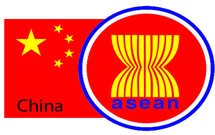 China-Vietnam relations have deteriorated sharply since the China National Offshore Oil Corporation towed an oil rig into waters 220 km off central Vietnam’s coast. What added a new twist to the crisis was China’s sending of warships to guard the oil rig. This is clearly indicative of China’s growing belligerence and willingness to opt for non-peaceful means to settle the dispute in its favour. Certainly, it has shed all rhetoric of a peaceful rise. More than that, it is indicative of China’s shifting foreign policy from Deng Xiaoping’s low lie strategy to Xi Jinping’s irredentist strategy.
China-Vietnam relations have deteriorated sharply since the China National Offshore Oil Corporation towed an oil rig into waters 220 km off central Vietnam’s coast. What added a new twist to the crisis was China’s sending of warships to guard the oil rig. This is clearly indicative of China’s growing belligerence and willingness to opt for non-peaceful means to settle the dispute in its favour. Certainly, it has shed all rhetoric of a peaceful rise. More than that, it is indicative of China’s shifting foreign policy from Deng Xiaoping’s low lie strategy to Xi Jinping’s irredentist strategy.
China has in fact incrementally moved away from Deng’s low lie strategy since Jiang Zemin’s presidency. Jiang Zemin while retaining Deng’s fundamental reform strategy of ‘peace and development’ embarked upon great power diplomacy and focused on the fourth modernisation programme: that of defence modernisation. While Deng emphasised self-restraint, Jiang favoured conforming to the international order while demanding equality and respect. Hu Jintao moved a step forward. His foreign policy while symptomatic of a confident China’s rise also provided an alternate vision of governance epitomised in his harmonious development philosophy. Hu’s term coincided with the 2010 eruption of the South China Sea dispute which evidently demonstrated the shedding of self-restraint and opting for ‘modest operations’. In other words, Hu focused on the latter part of Deng’s sixteen character strategy, that is, instead of focusing on ‘hiding capabilities and biding time’, it harped upon ‘striving to make achievements’. Therefore, in 2010, China started flexing its muscle in the South China Sea and was willing to confront the US in the region.
Xi Jinping’s belligerent policy is not a deviation in Chinese foreign policy. It is a decisive attempt to de-centre the US and reclaim China’s centrality in the East Asian order, thereby fulfilling Xi’s ‘Chinese dream’. The present belligerence is hence a response to the US pivoting to the region and its recent pledge of support to Japan and other allies in the event of Chinese aggression.
China on its part would never give up its claim on the South China Sea. This is because the legitimacy of the Chinese government is based on nationalism and fulfilling the goal of the ‘Chinese dream’. Since the Chinese Communist Party cannot dismount the tiger of nationalism, the onus lies on the Southeast Asian nations.
But is the ASEAN willing to put up a fight? Laos and Cambodia are so deeply dependent economically on China that they are not willing to rock the boat. Indeed this happened in July 2012 at the Phnom Penh meet when the ASEAN countries could not come up with a joint communique for the first time in its 45-year history. If the ASEAN wants to remain relevant, it needs to rediscover itself and engage with each other meaningfully. If Laos and Cambodia cannot come along, the like-minded countries of Southeast Asia, those that identify China a common threat, must come together and form a new forum in the manner reminiscent of the formative stages of the ASEAN comprising of just five members.
Also, more importantly, the ASEAN mechanism needs to be redesigned. ASEAN is not a collective security arrangement. It functions on an informal basis and consensual manner described as the ‘ASEAN way’, which emphasises reciprocity, dialogue and consultation. While the ‘ASEAN way’ has facilitated cooperation among members, it is a fragile unity with no enforcement mechanism. Cambodia thus, could put a spanner in the ASEAN discussion on China’s role in the South China Sea dispute in 2012.
Besides rejuvenating the ASEAN, the ASEAN Regional Forum (ARF) needs to find meaningful ways of cooperating and resolving disputes. Mere confidence-building measures would not suffice. More importantly, the regional security architecture should shed the façade of multilateralism in dealing with China. Ironically, China engages bilaterally with the Southeast Asian countries to resolve a hitherto multilateral dispute over the South China Sea. In fact, the South China Sea dispute lingers on primarily due to China’s preference for bilateralism. Bilateralism allows China to blunt unanimous opposition to its policy and also keep the ASEAN divided.
Apart from creating meaningful multilateral mechanisms, the other plausible means to fight the growing Chinese menace in the South China Sea would be to create a common front with the US. But siding with the US to fight the Chinese threat is self-defeating. This is because China’s conflict is principally with the US, not with the Southeast Asian countries. Not surprisingly, with the US pivoting to the region, China has emerged more belligerent and unwilling to cooperate with Vietnam or Philippines on the South China Sea.
In this scenario where Chinese foreign policy has turned distinctively belligerent and confrontational, the remaining clear options for the Southeast Asian countries are mainly two: to unite the ASEAN on the common cause of fighting Chinese hegemony, and to strengthen the multilateral processes with conflict prevention and conflict resolution mechanisms in place. The question that however remains: is the ASEAN willing?
By Special Arrangement with Institute of Peace and Conflict Studies (http://www.ipcs.org)